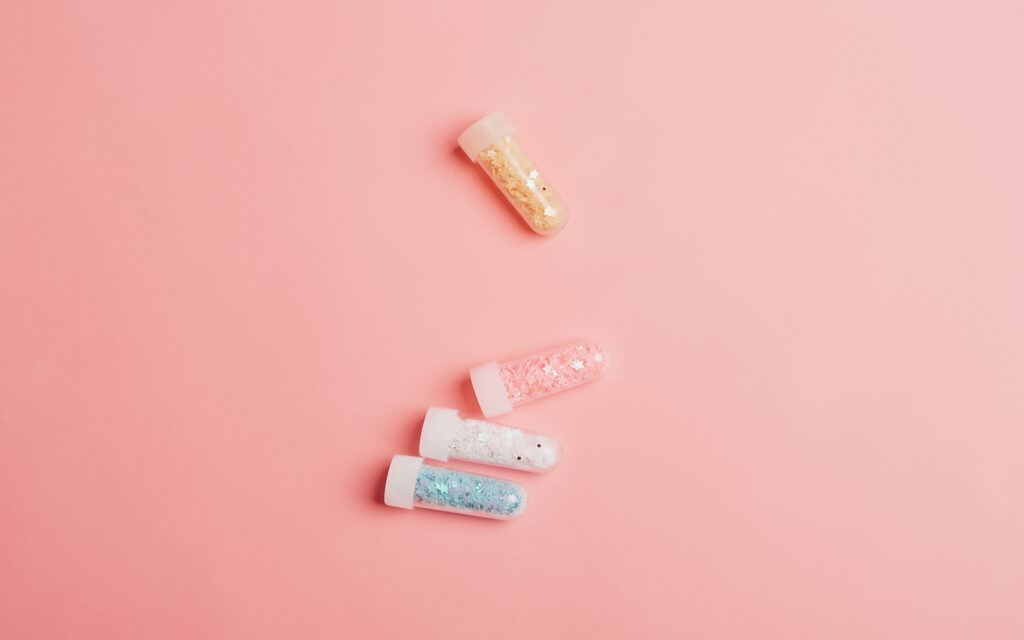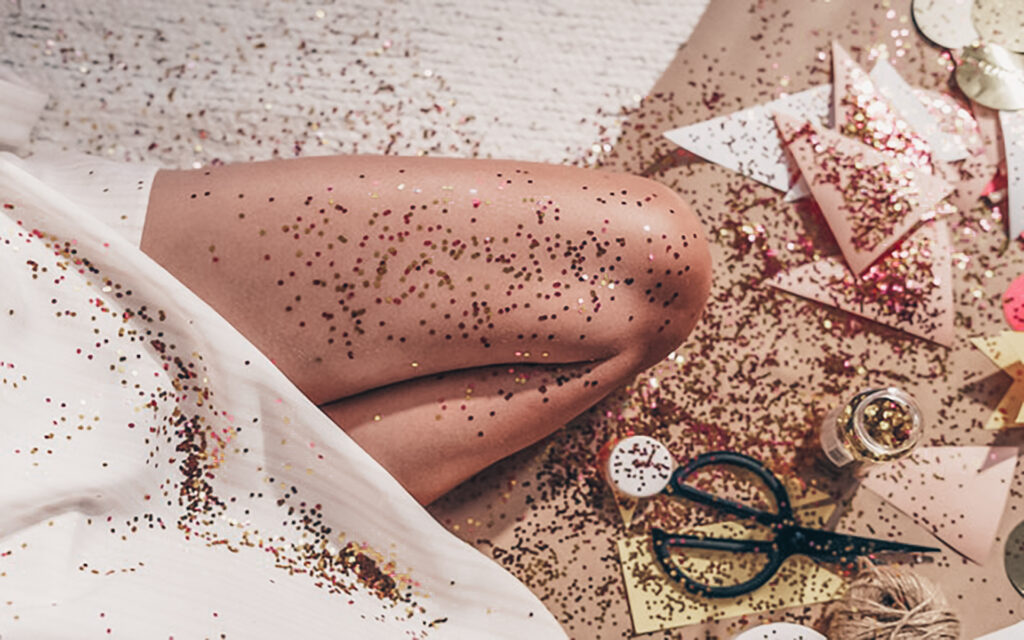Carrie Bradshaw, the iconic protagonist of Sex and The City, has perhaps made glitter return as a trend in the fashion world. After the boom in the 70s, the 90s was when it made a huge comeback. Several artists have made extensive use of it, including Britney Spears, an undisputed icon of that period for her extravagant outfits and make-up.
Some argue that even the HBO television series ‘Euphoria‘, starring the one and only Zendaya, has influenced this great comeback. This time, especially, in our contemporary beauty industry, it has left everyone speechless by the make-up design used by the characters. The director of the series explained how the imperfect make-up accurately used, translates the melancholy, sadness, and anxiety felt by the different characters. Therefore, glitter has played a pivotal role in accentuating various emotions, and creating a trend in the real world that went viral in a very short time, resulting in the depletion of many products, such as glitter, bright gems, and hyperpigmented colors.

But where does the glitter come from?
Glitter has a very long and complex history behind it. It was first produced in 1934 in a factory in New Jersey, almost by chance, by Henry Ruschmann.
The latter, a worker of German origin, had invented the machine to cut waste into very small pieces, thus beginning the story of the success of glitter.
Then, we see the first use of the word itself in the New York Times a few years later, in 1942, in an article that talked about how to use it, especially during Christmas time to decorate homes.
Today in the United States, there are two large glitter companies, Meadowbrook Inventions and Glitterex, both located in New Jersey.
What is the composition of this shiny product? The base is made of polyethylene terephthalate, a thermoplastic resin suitable for contact with food, the same material with which plastic is produced for bottles. Usually called using the abbreviation PET. A layer of aluminum is added to this base, which is applied with heat, giving it the bright and shiny appearance that we all know.

There are even more elaborate and complex techniques to create it, depending on the final product, such as glitter with a holographic effect, which requires multiple superpositions of color patterns between them.
Glitter also has multiple uses, from the artistic field to make-up, and even in the fashion industry is used to create particular garments and fabrics.
How much does it cost us to use glitter?
This product has the power to make things shine and infuse a feeling of preciousness into a garment or our make-up. The ancient Egyptians used sequins for the clothes of emperors. Today, they represent not only sumptuousness, but also freedom of expression, and in addition, it is suitable for both the male and female genders.
Whether just for aesthetics or to increase sales, there is no doubt that, if something shines, it will attract our attention decisively.
But how much does it cost to be beautiful? By its very nature, glitter is harmful to the environment, as it is made of non-recyclable plastic, and often with the addition of fused metals. Its production is not sustainable, and its elimination is practically impossible. Glitter is not biodegradable, and the fact that it is composed of tiny particles makes it easily dispersed in the air, soil, and water.
Often, companies use titanium and mica to create the effect we all know.
Mica, a mineral used as a base, is often found through child exploitation in developing countries, becoming a serious problem of human rights violations.

The TooD case and researchers from the University of Cambridge
Fortunately, having new knowledge, more information, and consumer awareness of sustainability issues have pushed many companies to find eco-friendly alternatives.
Researchers at the University of Cambridge have come up with an innovative, durable, and, above all, eco-sustainable material that can revolutionize the production of glitter on a large scale.
From the cellulose plants, fruits, vegetables, and trees they have come up with shiny and iridescent glitter exactly like the one we all know.
Cellulose nanocrystals refract light in such a way that it generates vivid colors reproducing phenomena already present in nature.
“Traditional pigments such as common gloss are not produced sustainably,” said Professor Silvia Vignolini from the University of Cambridge’s Department of Chemistry.
The particles resulting from the process examined by the researchers created a biodegradable, plastic-free, and non-toxic material. In addition, the same process uses less energy than ordinary glitter.
Cosmetics company TooD is already making use of new research using sustainable glitter. The founder of this brand, Shari Siadat, of Iranian origin, claims to have created the first brand that produces 100% vegetable cosmetics using biodegradable glitter, calling it ‘BioGlitter’.
TooD’s mission is to create make-up for everyone. The founder believes that every person should express themselves as they feel best and in the best possible way by celebrating themselves every day. The use of the right products is, therefore, fundamental. It is no coincidence that the name of the brand means ‘attitude‘, and its motto is: “We want to help you overcome your insecurities in your expression of beauty by offering you products to express how you feel (not how others tell you to look)”.





